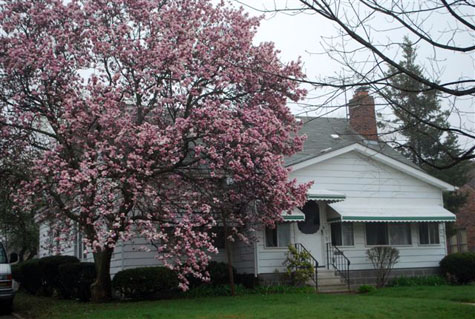 Everyone makes decisions about a life’s work. Whether they think it through, or not, decisions get made. As a landscape designer, I realized part of my life’s work was to plant magnolias-all manner of magnolias, every where it made good design sense to plant them. I am a designer who in part came to design via a love for plants. Plants are part of the vocabulary that helps give voice to a point of view. Every designer needs heart, soul, and nerve-but they also need language.
Everyone makes decisions about a life’s work. Whether they think it through, or not, decisions get made. As a landscape designer, I realized part of my life’s work was to plant magnolias-all manner of magnolias, every where it made good design sense to plant them. I am a designer who in part came to design via a love for plants. Plants are part of the vocabulary that helps give voice to a point of view. Every designer needs heart, soul, and nerve-but they also need language.
But back to magnolias. There is a history to my love for them. My design mentor Al Goldner had a big love for plants, but also a penchant for dragging along, and provoking his young staff, with beautiful plants. He took me to the garden of Phil Savage 35 years ago, give or take. I have not one shred of memory of the visit. But thanks to a thoughtful niece, I visited there last spring, after his death.
 Phil Savage, lived on almost 8 acres-most of which reflects a lifetime growing and hybridizing magnolias. He also grafted magnolia cuttings onto ash tree root stock-these trees are 70 feet tall on his property, as we speak. He hybridized “Yellow Butterflies”; when the spring weather is perfect, it is a dream come true in bloom. Later, it is sturdily and robustly green. His property had magnolias of a size, with flowers in colors, I have never seen-yellow, peach, orangy pink. It was like a visit to another planet. But no, just a visit to a man who knew and lived his life’s work.
Phil Savage, lived on almost 8 acres-most of which reflects a lifetime growing and hybridizing magnolias. He also grafted magnolia cuttings onto ash tree root stock-these trees are 70 feet tall on his property, as we speak. He hybridized “Yellow Butterflies”; when the spring weather is perfect, it is a dream come true in bloom. Later, it is sturdily and robustly green. His property had magnolias of a size, with flowers in colors, I have never seen-yellow, peach, orangy pink. It was like a visit to another planet. But no, just a visit to a man who knew and lived his life’s work.

I have a magnolia in my yard, which I inherited. It looks like no magnolia I know. It is the first thing to make a move, in the spring. I have a supposedly “hardy” hybrid of Magnolia Grandiflora tucked into a corner, hoping nature won’t notice. In pure envy of the British, I am growing an arbor of Magnolia “Galaxy” over my driveway. My neighborhood dating from the 1930’s is peopled with Magnolia Soulangiana trees of immense size-mostly poorly placed. Plants have a will to live, thank God. The day they drop their petals, one could weep.
The point of this-you don’t need to know the words magnolia soulangiana. But you may need that tree somewhere in your landscape that is asking for bold form, flowers and leaves-so put its image in your design dictionary. If I have my way, my life’s work will make for a whole blizzard of giant petals, dropping softly, every year, on one particular spring day.
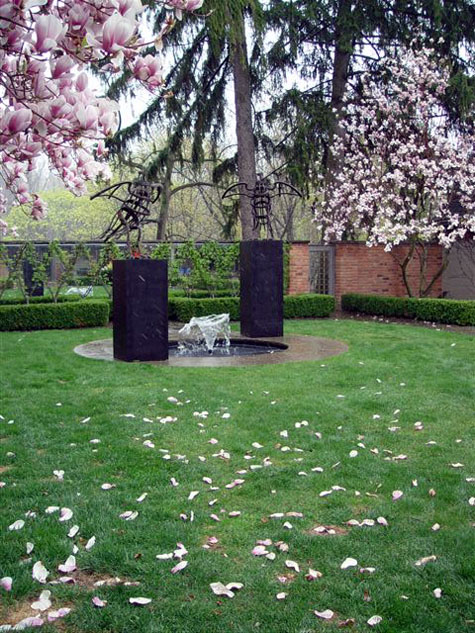

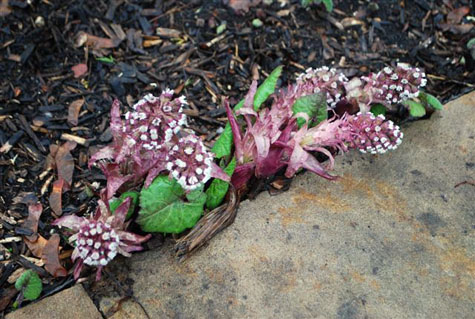 The temperatures still hover at or below the freezing mark here-typical for the Midwest. But there are signs of life. The butterburr flowers are stirring. They are preceded by huge cracks in the earth. Ungainly and ill-proportioned, they look dead as they emerge from the ground, and grow downwards back to the earth-astonishing. However unappetizing, these flowers are quickly replaced by giant, faintly prehistoric, leafy plants of equally astonishing scale. They form large colonies overnight-the kind that would spread into your house via the bedroom window-if you are not the vigilant sort.
The temperatures still hover at or below the freezing mark here-typical for the Midwest. But there are signs of life. The butterburr flowers are stirring. They are preceded by huge cracks in the earth. Ungainly and ill-proportioned, they look dead as they emerge from the ground, and grow downwards back to the earth-astonishing. However unappetizing, these flowers are quickly replaced by giant, faintly prehistoric, leafy plants of equally astonishing scale. They form large colonies overnight-the kind that would spread into your house via the bedroom window-if you are not the vigilant sort.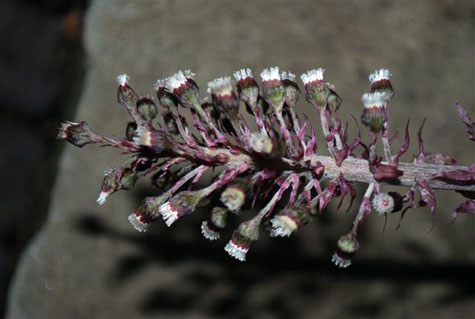
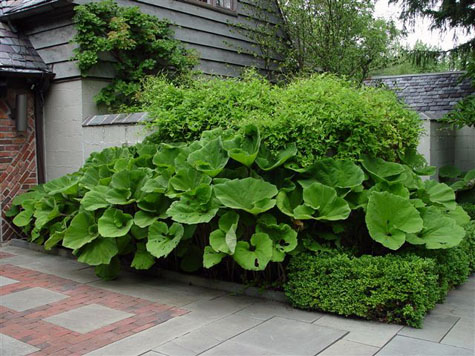

 OK, I have spent days detailing my childhood exposure and love of dirt-how does this pertain to you? Sculpting ground-this is a fancy definition for “grading”. Grading dirt, simply stated, it is the process of moving dirt around, so water drains, there are flat places to be, and the sculpture of the ground which will become your landscape, looks interesting, and beautiful. We can lower the dirt here; we can raise the dirt here. We can feather that area into this one. How the house sits on the land is a big issue for new homes-thus many cities require grading plans. The project pictured tried to address a specific landscape issue. A giant bumpy lawn on a considerable slope was not hospitable to either my client, or her guests. The space needed some flat ground, and a sense of some intimacy. The lawn was greatly over scaled for people. Nor was the shape of the lawn beautiful. With an earthmover, and rakes, the ground became sculptural and beautiful-but also useable. I call this a grass amphitheater.
OK, I have spent days detailing my childhood exposure and love of dirt-how does this pertain to you? Sculpting ground-this is a fancy definition for “grading”. Grading dirt, simply stated, it is the process of moving dirt around, so water drains, there are flat places to be, and the sculpture of the ground which will become your landscape, looks interesting, and beautiful. We can lower the dirt here; we can raise the dirt here. We can feather that area into this one. How the house sits on the land is a big issue for new homes-thus many cities require grading plans. The project pictured tried to address a specific landscape issue. A giant bumpy lawn on a considerable slope was not hospitable to either my client, or her guests. The space needed some flat ground, and a sense of some intimacy. The lawn was greatly over scaled for people. Nor was the shape of the lawn beautiful. With an earthmover, and rakes, the ground became sculptural and beautiful-but also useable. I call this a grass amphitheater.
 As I have said before, I have loved moving dirt my whole life. How this helps you is as follows. You have a life you are dealt, and a life you make. Look at what you were dealt, and imagine it better; imagine it beautiful, then move some dirt around.
As I have said before, I have loved moving dirt my whole life. How this helps you is as follows. You have a life you are dealt, and a life you make. Look at what you were dealt, and imagine it better; imagine it beautiful, then move some dirt around.

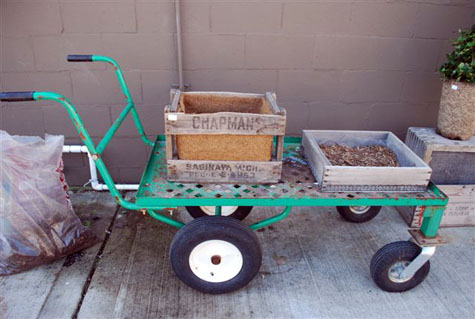
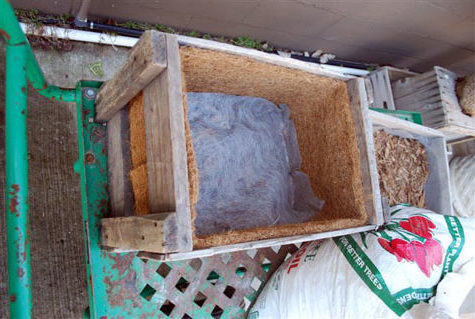
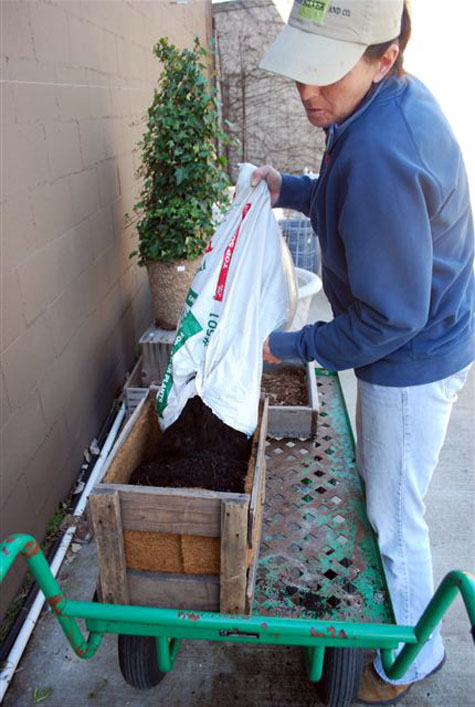
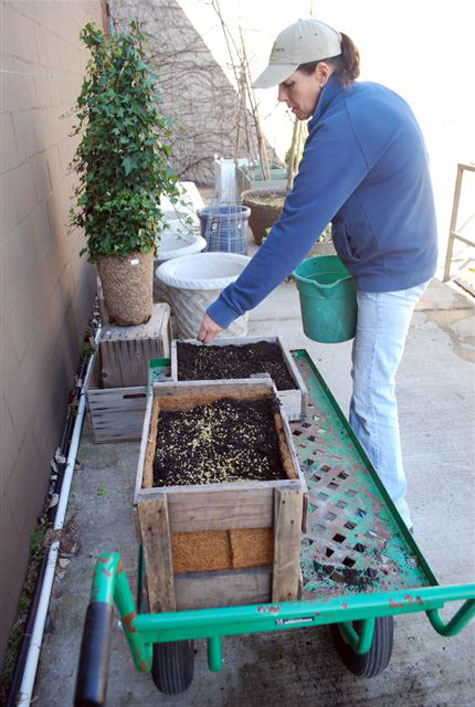

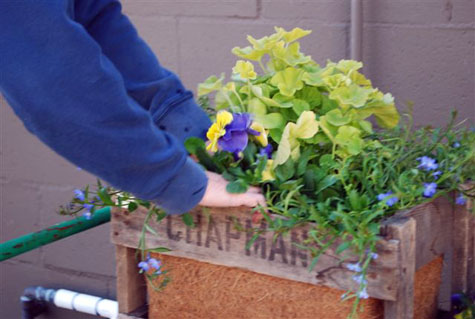
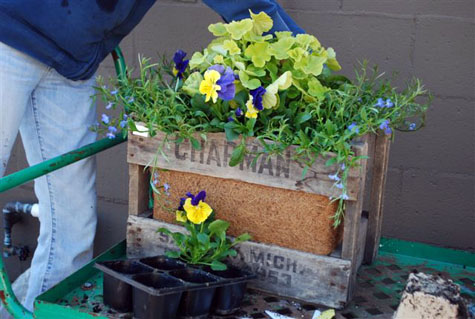
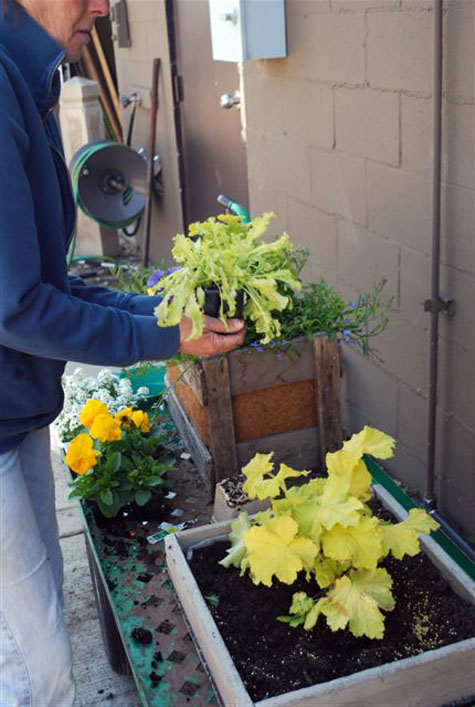
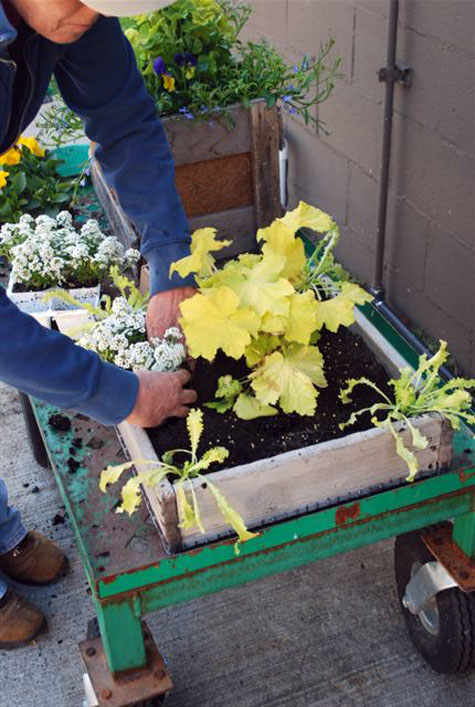
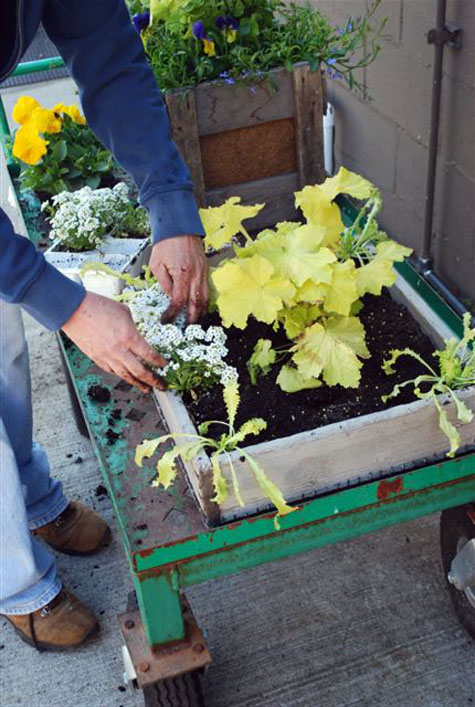
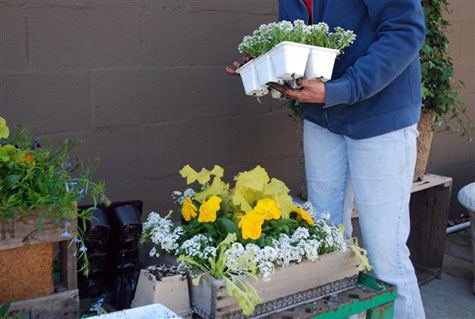 Spring plantings do look great in old crates, wood boxes, buckets and baskets. Landscape fabric can help hold the soil where you want it; coir sheets can be cut for boxes with big open spaces. Coir is a mat woven from the fibers of the hull of the coconut; it is sometimes called coco fiber. Have at planting some pots.
Spring plantings do look great in old crates, wood boxes, buckets and baskets. Landscape fabric can help hold the soil where you want it; coir sheets can be cut for boxes with big open spaces. Coir is a mat woven from the fibers of the hull of the coconut; it is sometimes called coco fiber. Have at planting some pots.